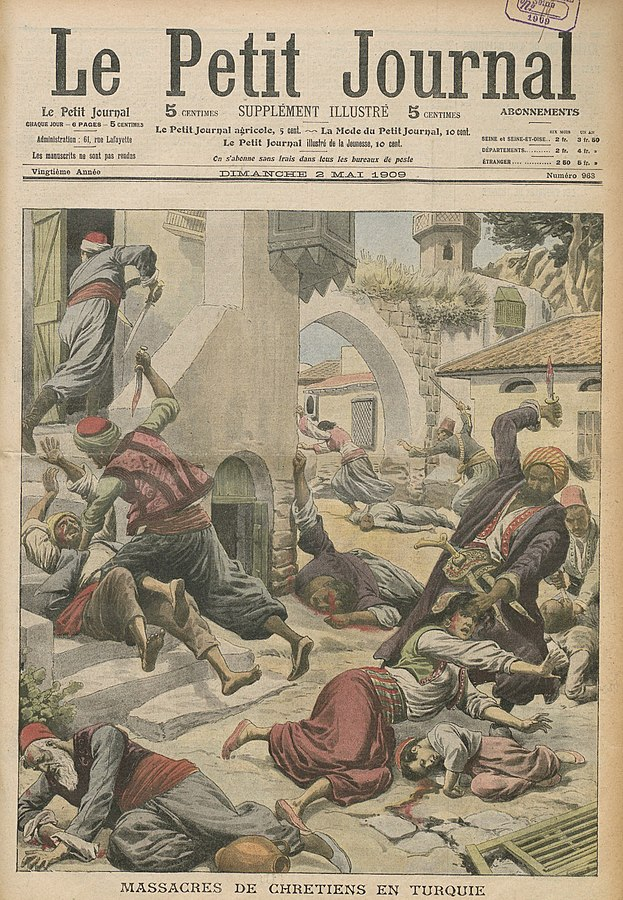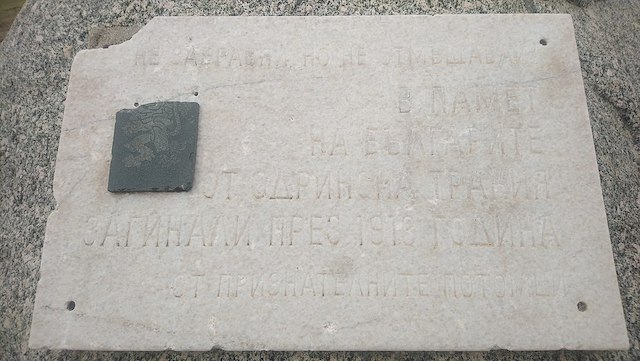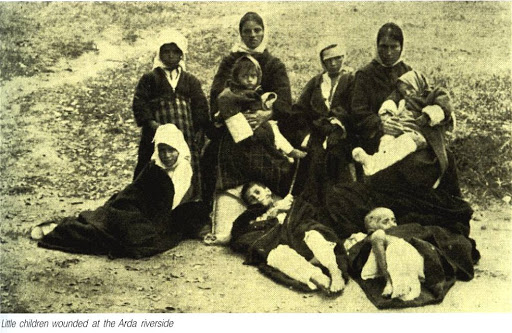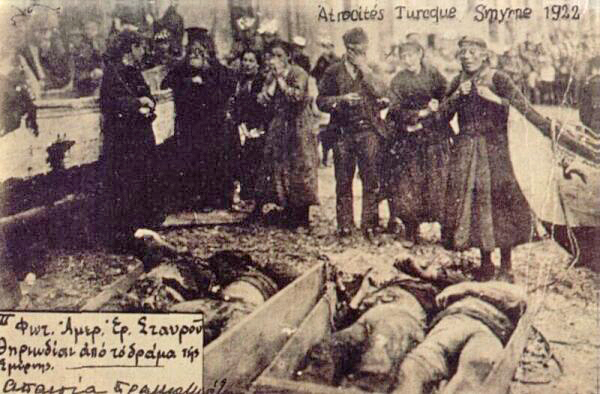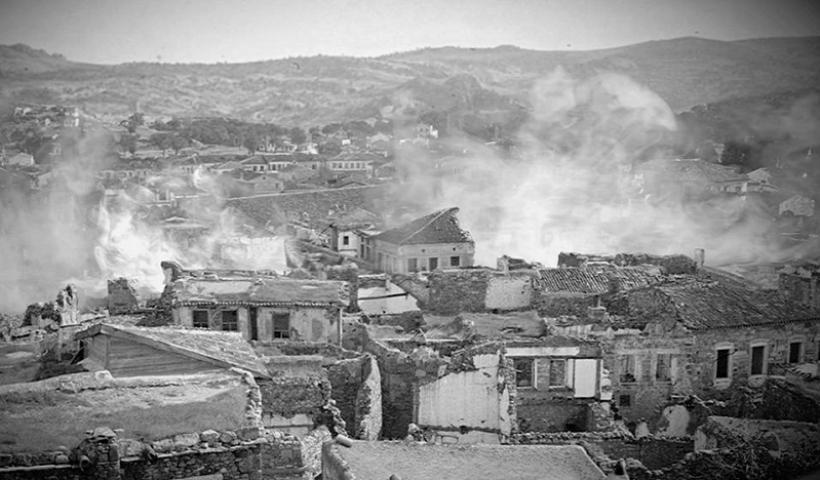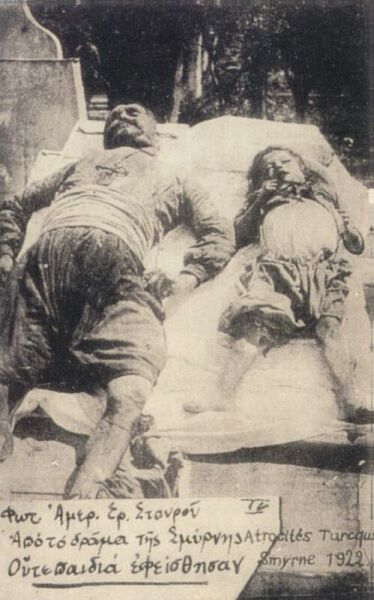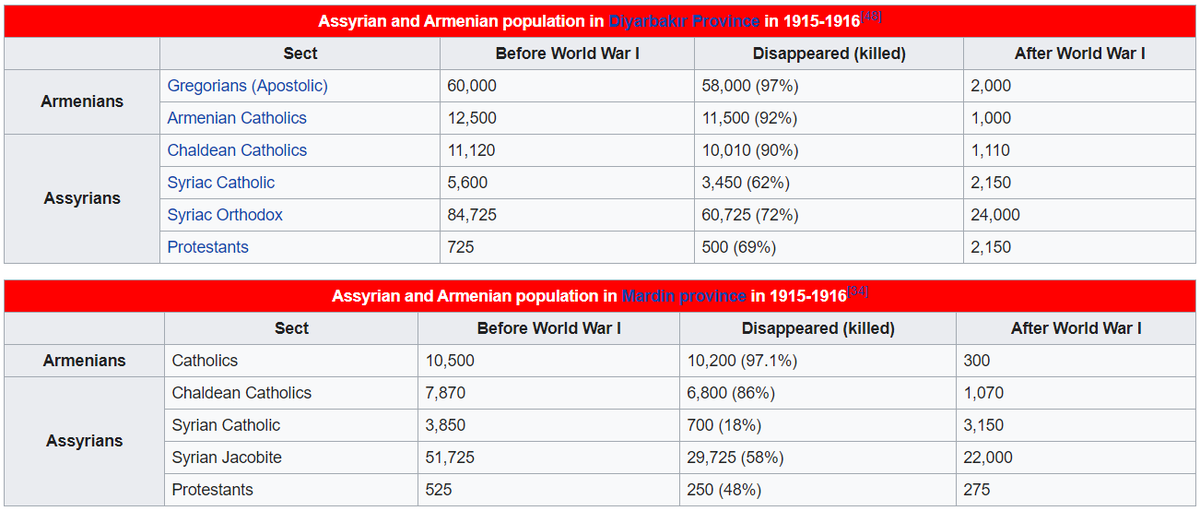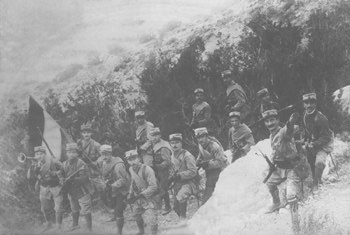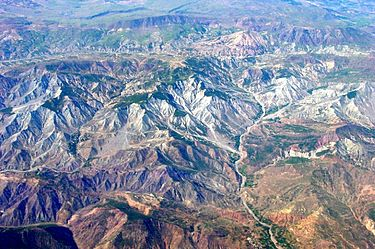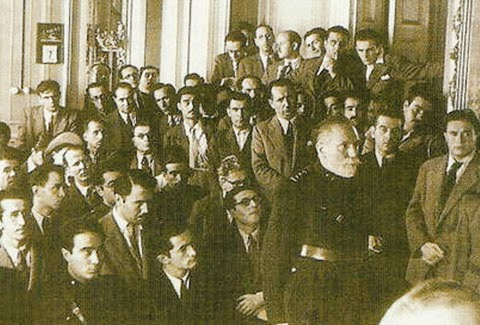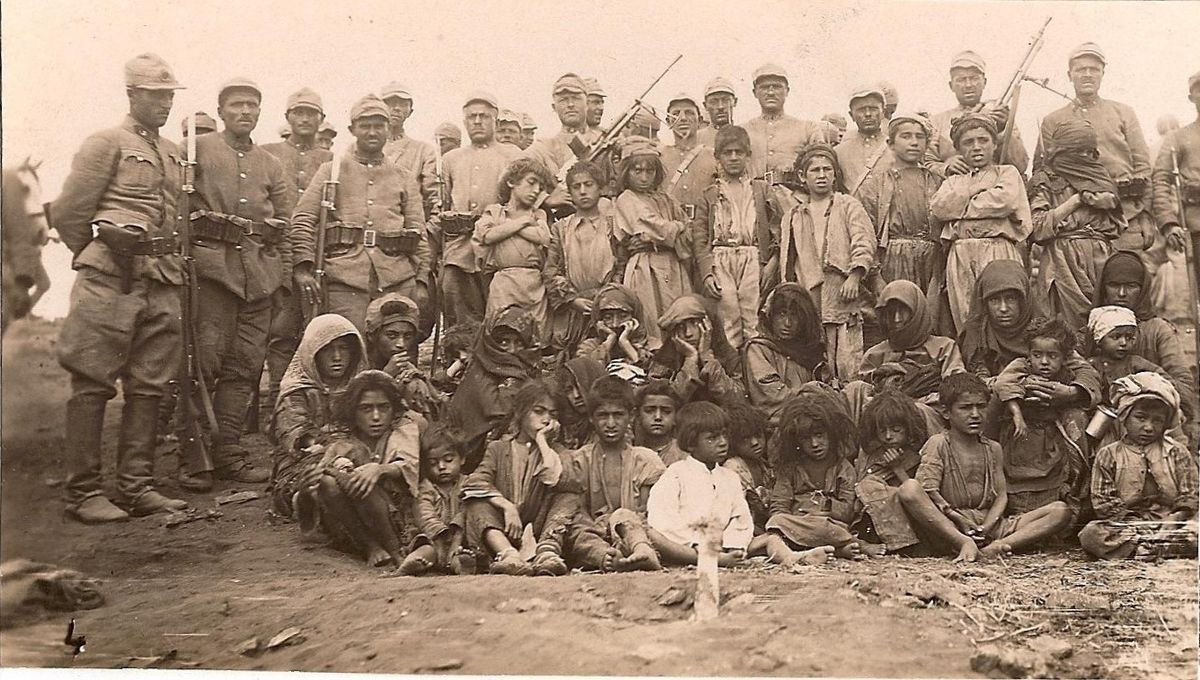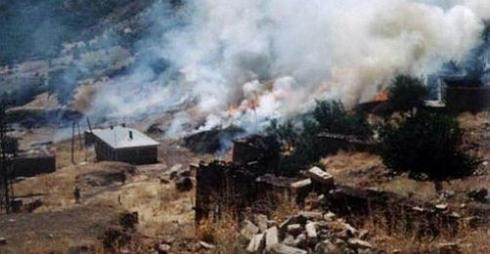I& #39;m going to make some threads on genocides, mass murders, invasions and war crimes done by different Turkish regimes and authorities.
Of course Turkish authority in the region only goes back to the Ottoman empire who emerged around late 13th century. Anyways back to the point:
Of course Turkish authority in the region only goes back to the Ottoman empire who emerged around late 13th century. Anyways back to the point:
1- The fall of Constantinople
by the hands of the Ottoman empire on 6 April – 29 May 1453 (53 days).
The attacking Ottoman army, which significantly outnumbered Constantinople& #39;s defenders, was commanded by the 21-year-old Sultan Mehmed II.
by the hands of the Ottoman empire on 6 April – 29 May 1453 (53 days).
The attacking Ottoman army, which significantly outnumbered Constantinople& #39;s defenders, was commanded by the 21-year-old Sultan Mehmed II.
A small few lucky civilians managed to escape. Luckily for the occupants of the city, the Ottomans were not interested in killing potentially valuable slaves, but rather in the loot they could get from raiding the city& #39;s houses, so they decided to attack the city instead.
2- Constantinople massacre of 1821
The Constantinople massacre of 1821 was orchestrated by the authorities of the Ottoman Empire against the Greek community of Constantinople (modern Istanbul) in retaliation for the outbreak of the Greek War of Independence (1821–1830).
The Constantinople massacre of 1821 was orchestrated by the authorities of the Ottoman Empire against the Greek community of Constantinople (modern Istanbul) in retaliation for the outbreak of the Greek War of Independence (1821–1830).
On the day of the hanging of Gregory V, three bishops and dozens of other Greeks, high officials in the Ottoman administration, were quickly executed in various parts of the Ottoman capital.
Moreover, the execution of the Patriarch signaled a reign of terror against the Greeks
Moreover, the execution of the Patriarch signaled a reign of terror against the Greeks
Fanatical Muslims were encouraged to attack Greek communities throughout the Ottoman Empire. Thus, groups of fanatical Turks, including janissaries, roamed the streets of the city, as well as the nearby villages. They looted Greek churches and property, initiating a big campaign.
News about the massacre and enslavement of Greeks in Constantinople in 1821, as published in the "Gazette de Lausanne" of Nov. 13, 1821. The correspondence is from Odessa as of Oct. 16, 1821.
Around 14 Christian churches suffered heavy damage, while some of them were completely destroyed. The Patriarchal complex also became one of the targets. Eugenius II, the newly elected Patriarch, saved himself at the last moment, by escaping to the roof. During this period,
the Ottoman authorities sought prominent Greeks from all over Constantinople: in government service, in the Orthodox Church, or members of prominent families and put them to death by hanging or beheading. In addition, hunsdreds Greek merchants in the city were also massacred
Anti-Greek massacres in other parts of the Ottoman Empire (May–July 1821)
The same state of affairs also spread to other major cities of the Ottoman Empire with significant Greek populations.
The same state of affairs also spread to other major cities of the Ottoman Empire with significant Greek populations.
In Adrianople (now known as Edirne in English), on May 3, the former Patriarch, Cyril VI,nine priests and twenty merchants were hanged in front of the local Cathedral. Other Greeks of lower social status were executed, sent to exile or imprisoned.
In Smyrna (now Izmir), numerous Ottoman troops were staged, waiting orders to march against the rebels in Greece. They entered the city and together with local Turks embarked on a general massacre against the Christian population of the city which amounted to hundreds of deaths.
During another massacre in the predominantly Greek town of Ayvalik, the town was burned to the ground, for fear that the inhabitants might rebel and join the revolution in Greece. As a result of the massacres, hundreds of Greeks were killed and many of the survivors enslaved
Similar massacres against the Greek population during these months occurred also in the Aegean islands of Kos and Rhodes. Part of the Greek population in Cyprus was also massacred. Among the victims was the archbishop Kyprianos, as well as five other local bishops.
3- Hamidian massacres
also referred to as the Armenian Massacres of 1894–1896 and Armenian genocide were massacres of Armenians in the Ottoman Empire that took place in the mid-1890s. It was estimated casualties ranged from 80,000 to 300,000,resulting in 50,000 orphaned children
also referred to as the Armenian Massacres of 1894–1896 and Armenian genocide were massacres of Armenians in the Ottoman Empire that took place in the mid-1890s. It was estimated casualties ranged from 80,000 to 300,000,resulting in 50,000 orphaned children
The massacres are named after Sultan Abdul Hamid II, who, in his efforts to maintain the imperial domain of the collapsing Ottoman Empire, reasserted Pan-Islamism as a state ideology.
Although the massacres were aimed mainly at the Armenians, they turned into indiscriminate anti-Christian pogroms in some cases, such as the Diyarbekir massacre, where, at least according to one contemporary source, up to 25,000 Assyrians were also killed.
"What I myself saw this Friday afternoon [November 1] is forever engraven on my mind as the most horrible sight a man can see. I went with one of the cavasses [guards] of the English Legation, a soldier, my interpreter, and a photographer (Armenian) to the Gregorian Cemetery "
4-The Adana massacre occurred in the Adana of the Ottoman Empire in 1909. A massacre of Armenian Christians by Ottoman Muslims to a series of anti-Armenian pogroms reports estimated that the massacres resulted in the deaths of as many as 20,000–30,000 Armenians.
5- Thracian Bulgarians Ethnic Cleansing
refers to the systematic expulsion of the native Christians (Bulgarians, Greeks and Armenians) in Eastern Thrace. These atrocities occurred during and after the Second Balkan War of 1913.
refers to the systematic expulsion of the native Christians (Bulgarians, Greeks and Armenians) in Eastern Thrace. These atrocities occurred during and after the Second Balkan War of 1913.
Additionally, it involves some of the figures later complicit in the Armenian Genocide of World War One. Historians increasingly view the Destruction of the Thracian Bulgarians as a prototype for subsequent Ottoman campaigns of ethnic cleansing.
6- Yenimuhacir massacres
It was a Bulgarian settlement during the Ottoman Empire era. During the Second Balkan War in 1913, the Ottoman Army surrounded Bulgarköy and proceeded to massacre between 450 and 1100 inhabitants ,including women & children, burning the village to ground
It was a Bulgarian settlement during the Ottoman Empire era. During the Second Balkan War in 1913, the Ottoman Army surrounded Bulgarköy and proceeded to massacre between 450 and 1100 inhabitants ,including women & children, burning the village to ground
7- Greek Genocide
Including the Pontic genocide, was the systematic killing of the Christian Ottoman Greek population carried out in Anatolia during World War I and its aftermath (1914–1922) on the basis of their religion and ethnicity.
Including the Pontic genocide, was the systematic killing of the Christian Ottoman Greek population carried out in Anatolia during World War I and its aftermath (1914–1922) on the basis of their religion and ethnicity.
It was instigated by the government of the Ottoman Empire and the Turkish nationalists against the Greeks of the Empire including massacres, forced deportations involving death marches, summary expulsions, arbitrary execution, and the destruction of Eastern Orthodox cultural-
, historical, and religious monuments.
For the whole of the period between 1914 and 1922 and for the whole of Anatolia, there are academic estimates of death toll ranging from 289,000 to 750,000.
The Greek government collected figures to claim that a total of one million death
For the whole of the period between 1914 and 1922 and for the whole of Anatolia, there are academic estimates of death toll ranging from 289,000 to 750,000.
The Greek government collected figures to claim that a total of one million death
Republic of Turkey 1923 - Present
9- Battle of Marash
It was the first major battle of the Turkish War of Independence, and the three-week-long engagement in the city ultimately forced the French to abandon and retreat from Marash and resulted in a Turkish massacre of Armenians
9- Battle of Marash
It was the first major battle of the Turkish War of Independence, and the three-week-long engagement in the city ultimately forced the French to abandon and retreat from Marash and resulted in a Turkish massacre of Armenians
-who had just been repatriated to the city following the Armenian Genocide. The controversial retreat, along with the massacre that took place under French watch, was subsequently dubbed the "Marash Affair."
10- Zilan massacre
refers to the massacre of thousands of Kurdish residents in the Zilan Valley of Turkey by 12/13 July 1930, during the Ararat rebellion, in which 800–1500 armed men participated.
refers to the massacre of thousands of Kurdish residents in the Zilan Valley of Turkey by 12/13 July 1930, during the Ararat rebellion, in which 800–1500 armed men participated.
After the Sheikh Said rebellion, on 8 September 1925, the Reform Council for the East (Turkish: Şark İslahat Encümeni) was established by Kemal Atatürk and it prepared the Report for Reform in the East (Turkish: Şark İslahat Raporu),
which provided for special administrative arrangements for the Eastern areas and introduced the Inspector-General system.[19] This plan forced Kurdish aristocrats and religious leaders to relocate to other parts of Turkey.
On 17 July 1927, with the "Law on the Transfer of Certain People from Eastern Regions to the Western Provinces" (Turkish: Bazı Eşhasın Şark Menatıkından Garp Vilâyetlerine Nakillerine Dair Kanun), the target of the forced migration was extended.
On 9 May 1928, the Turkish government enacted an amnesty law. Amnesty was offered to all oppositional Kurds willing to submit to the Kemalist government, and Kurdish nationalists were freed from prison.
However, attempts by the Turkish government at initiating meaningful negotiations failed. The Turkish government then decided to negotiate directly with Ihsan Nuri Pasha, but this effort was also in vain.
On 29 December 1929, President Atatürk led the cabinet meeting, A decision was adopted to begin a military operation against Mount Ararat in June 1930.
According to the daily Cumhuriyet dated 16 July 1930, about 15,000 people were killed and Zilan River was filled with dead bodies as far as its mouth.
The British Foreign Office reported "The conviction here is that the Turkish & #39;success& #39; near Ergish and Zilan were really gained over a few armed men and a large percentage of non-combatants."
In 2007, Ercan Öksüz and Oktay Candemir, journalists working for the Dicle News Agency, interviewed 94-year-old living eyewitness Kakil Erdem and published the interview with the title "Zilan Katliamı& #39;nın Tanığı Konuştu" (Witness of Zilan Massacre Talks).
The Van 2nd Criminal Court of First Instance tried the journalists for "inciting hatred and hostility". In 2009, each of them received a prison sentence of 18 months.
11- 1934 Thrace pogroms
refers to a series of violent attacks against Jewish citizens in June and July 1934 in the Thrace region of Turkey.
At the height of events, it was rumoured that a rabbi was stripped naked and was dragged through the streets while his daughter was raped
refers to a series of violent attacks against Jewish citizens in June and July 1934 in the Thrace region of Turkey.
At the height of events, it was rumoured that a rabbi was stripped naked and was dragged through the streets while his daughter was raped
Over 15,000 Jews had to flee from the region.
Photo: Members of the nationalist and antisemitic community brought to trial in 1944
Photo: Members of the nationalist and antisemitic community brought to trial in 1944
12- Dersim rebellion
The Dersim rebellionwas an Alevi-Zaza uprising against the Turkish government in the Dersim region of eastern Turkey, which includes parts of Tunceli Province, Elazığ Province, and Bingöl Province.
The Dersim rebellionwas an Alevi-Zaza uprising against the Turkish government in the Dersim region of eastern Turkey, which includes parts of Tunceli Province, Elazığ Province, and Bingöl Province.
Around 25,000 troops were deployed to quell the rebellion. This task was substantially completed by the summer and the leaders of the rebellion, including tribal leader Sayiid Riza, were hanged.
Turkish soldiers and the local people of the Dersim region. According to official Turkish records, they were exiled to other provinces in Turkey. According to an unverifiable claim by Salman Yeşildağthey were executed after the picture was taken.
According to an official report of the Fourth General Ispectorate, 13,160 civilians were killed by the Turkish Army and 11,818 people were taken into exile, depopulating the province.
13- 33 Bullets Incident in Van province
32 Kurdish villagers were extrajudicially executed by General Mustafa Muğlalı for smuggling livestock, one of them escaped. (no further information known)
M. Slice of pizza
32 Kurdish villagers were extrajudicially executed by General Mustafa Muğlalı for smuggling livestock, one of them escaped. (no further information known)
M. Slice of pizza
14- Istanbul pogrom
The Istanbul pogrom, also known as the Istanbul riots or September events were organized mob attacks directed primarily at Istanbul& #39;s Greek minority on 6–7 September 1955.
The Istanbul pogrom, also known as the Istanbul riots or September events were organized mob attacks directed primarily at Istanbul& #39;s Greek minority on 6–7 September 1955.
15- Maraş massacre
The Maraş massacre was the massacre of more than one hundred Alevi civilians in the city of Kahramanmaraş, Turkey, in December 1978, by the neo-fascist Grey Wolves
The Maraş massacre was the massacre of more than one hundred Alevi civilians in the city of Kahramanmaraş, Turkey, in December 1978, by the neo-fascist Grey Wolves
16- The Çorum massacres occurred in the province of Çorum in Turkey between May and July 1980. Extremist Sunni Muslims, who were part of a "nationalist youth" campaign, targeted the Alevi minority and killed more than 50 and more than 200 were injured.
17- Pınarcık massacre
The Pinarcik Massacre is the name given to a 20 June 1987 event in which 30 Kurdish civilians were killed in the village of Pınarcık, in the Mardin Province of Turkey. The dead consisted of eight village guards, sixteen children and eight women.
The Pinarcik Massacre is the name given to a 20 June 1987 event in which 30 Kurdish civilians were killed in the village of Pınarcık, in the Mardin Province of Turkey. The dead consisted of eight village guards, sixteen children and eight women.
18- Lice massacre
According to HRW, the incident is one of the worst human rights abuses committed by the Turkish Armed Forces during the Turkish-Kurdish conflict in 1993. In what HRW has called a "grossly disproportionate" use of force.
According to HRW, the incident is one of the worst human rights abuses committed by the Turkish Armed Forces during the Turkish-Kurdish conflict in 1993. In what HRW has called a "grossly disproportionate" use of force.
Turkish soldiers systematically moved throughout the town, randomly firing live ammunition at the mainly Kurdish civilians and destroying both residential and commercial buildings.
the European Court of Human Rights. On 8 January 2004, ruled that Turkey was in violation of the European Convention on Human Rights for "destruction of possessions and homes by security forces and lack of an effective remedy";[ the judgement became final in April 2004.
19- Kuşkonar massacre
The government bombed and killed residents of villages who refused to join the government forces and they spread pictures of dead children in newspapers and blamed the PKK. Turkey was condemned for carrying out the massacre of Kurdish civilians in the ECHR.
The government bombed and killed residents of villages who refused to join the government forces and they spread pictures of dead children in newspapers and blamed the PKK. Turkey was condemned for carrying out the massacre of Kurdish civilians in the ECHR.
20- Roboski airstrike
The Roboski airstrike, also known as the Uludere airstrike or the Sirnak massacre took place on December 28, 2011, at 9:37 pm local time near the Turkish–Iraqi border. According to Turkish government sources, 34 "smugglers" were killed including children
The Roboski airstrike, also known as the Uludere airstrike or the Sirnak massacre took place on December 28, 2011, at 9:37 pm local time near the Turkish–Iraqi border. According to Turkish government sources, 34 "smugglers" were killed including children
From this point on I think I can& #39;t keep count of all the historic massacres, political involvements and etc... by the AKP government in the surrounding region!
In 2016 the government staged a coup to use it as an excuse to jail thousands of people who they suspected
In 2016 the government staged a coup to use it as an excuse to jail thousands of people who they suspected
Turkey has been actively and negatively involved in Syrian internal conflicts (Check tweet below) https://twitter.com/MiranShamall/status/1276592149287616520">https://twitter.com/MiranSham...
They have bombed Kurdistan regions borders, villages and towns more than 700 times and they keep on doing it non-stop and have killed civilians and villagers under the excuse of PKK existence in the region disregarding the Iraqi and KRI& #39;s sovereignty
Their army is involved in Libya and many other countries
Please feel free to add anything else I forgot to include.
Cizre basement massacre
The violence peaked on 7 February 2016, when more than 150 civilians were killed by Turkish security forces, reportedly many burnt alive. Some of the claimed dead were allegedly children as young as nine to 10 years old. #TurkeyInvadesKurdistan
The violence peaked on 7 February 2016, when more than 150 civilians were killed by Turkish security forces, reportedly many burnt alive. Some of the claimed dead were allegedly children as young as nine to 10 years old. #TurkeyInvadesKurdistan

 Read on Twitter
Read on Twitter

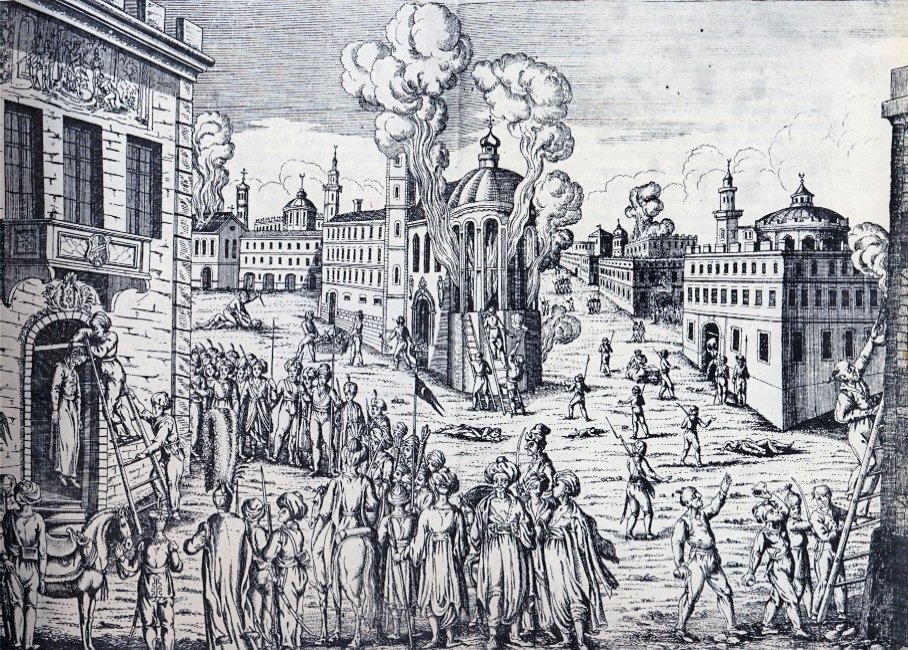

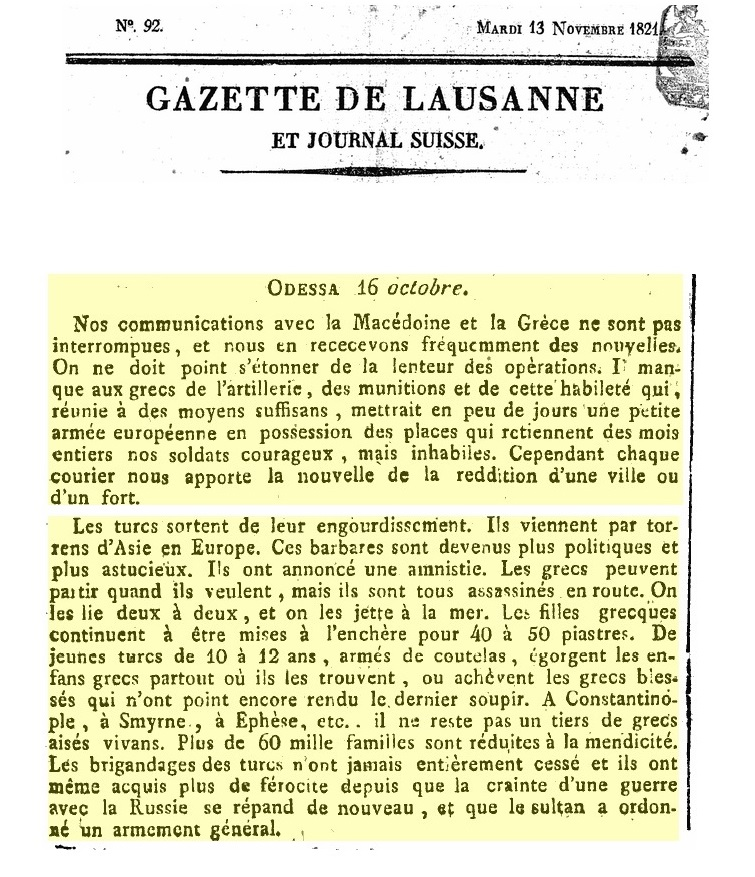
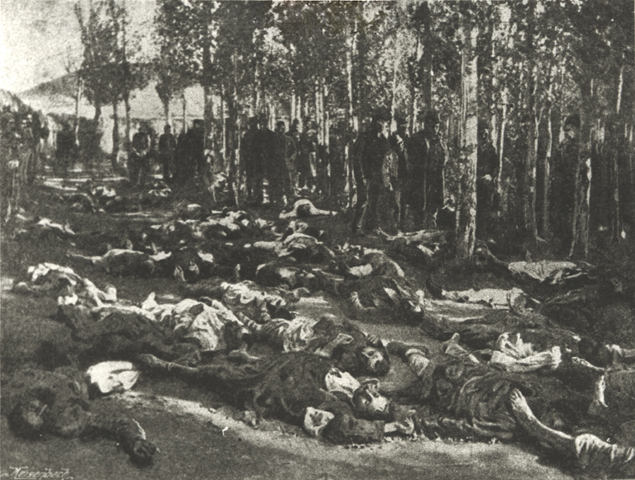

!["What I myself saw this Friday afternoon [November 1] is forever engraven on my mind as the most horrible sight a man can see. I went with one of the cavasses [guards] of the English Legation, a soldier, my interpreter, and a photographer (Armenian) to the Gregorian Cemetery " "What I myself saw this Friday afternoon [November 1] is forever engraven on my mind as the most horrible sight a man can see. I went with one of the cavasses [guards] of the English Legation, a soldier, my interpreter, and a photographer (Armenian) to the Gregorian Cemetery "](https://pbs.twimg.com/media/EbgwKgAWAAAlwC_.png)
